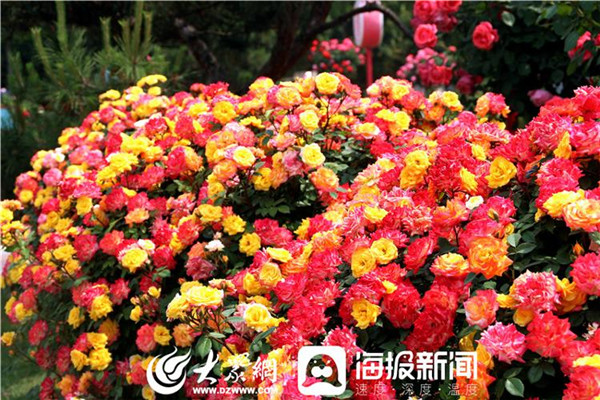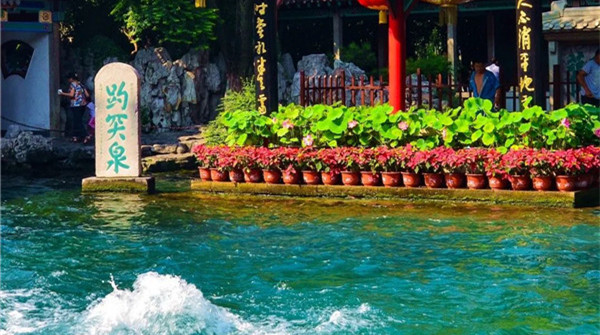Kite-making helps city soar
In Weifang, Shandong province, kites are not just toys. They symbolize both culture and an industry for the city.
Widely known as the world capital of kites, Weifang has a history of flying kites dating back about 2,400 years.
Legends say that ancient Chinese philosopher Mozi made the first kite in the world in the Lushan Mountain area, which now belongs to Weifang. It is said that the kite, made of wood, took him three years to finish but then fell and broke on the first day it flew.
Others believe that the true inventor of kites was Mozi's contemporary Lu Ban, a famous craftsman and engineer who has long been regarded as the patron saint of Chinese builders and carpenters. His kite, made of wood and bamboo in the shape of a magpie, flew three days before it fell, an ancient book records.
A statue of Lu stands in front of the gate of the Weifang World Kite Museum, the largest kite museum in the world.
Covering total floor area of 8,100 square meters, the museum has a design that resembles the dragon-head centipede kite, the most famous Weifang kite pattern. The roof is made of blue glazed tiles with a ceramic dragon in the ridge, and the walls are covered in white mosaic patterns.
Built in 1987, the museum has more than 1,000 kites in its collection, most of which have been flown. They represent different schools of kite-making in both China and overseas regions such as the United States, Japan, South Korea and Southeast Asia.
One of the largest kites in the museum is about 140 meters long and features 108 portraits connected by a string, which are based on the characters in the Chinese classic novel Outlaws of the Marsh. The kite was first flown in 1985.
The smallest exhibits are no more than 5 cm long and visitors must use magnifying glasses to see them clearly. These miniatures use the same materials, techniques and patterns as the full-size models.
In addition to displays of kites, the museum has historical documents, models and videos depicting the history and culture of kites.
Even without wind, Li Naigang, vice-director of the museum, can fly a kite indoors. He does this performance with a specially made kite in the museum during his spare time.
He said he first saw indoor kite-flying in 2007 by an overseas team at the annual Weifang International Kite Festival. He then spent more than a year studying the techniques himself.
He said the museum attracts about 100,000 visitors a year.
"The museum is a window through which we showcase the kite culture across the world," he said.
In Yangjiabu village, northeast of the Weifang city center, kites were originally byproducts of local woodblock New Year prints, a national intangible cultural heritage item that dates back some 600 years.
In the beginning, substandard prints were made into kites for children, and later, the bright colors and exaggerated figures of the prints became popular features of local kites.
Yan Kechen, has been demonstrating how to carve woodblocks at Yangjiabu Folk Art Park for more than 40 years. He said his largest work took three years to finish, while regular-sized blocks require about five days.
Another master, Yang Junyou, has 50 years of experience in printing. He said the technique he uses is the same as used 600 years ago, except for the paint, which is a modern chemical product.
Although many people in the village can make New Year prints now, not all make a living from it. Yan said he has had about 30 students, but only two of them have become masters.
The village produces about 21 million New Year prints a year, many of them sold to more than 100 countries and regions overseas.
In contrast to Yangjiabu kites that focus on craftsmanship, kites made in the Wangjiazhuang area highlight practicality and industrialization.
The community, comprising four villages, was honored as the Chinese modern kite industry base by the International Kite Union in 2015. It has a total population of 4,650 people, about 2,200 of whom are involved in kite and kite component manufacturing businesses.
There are more than 80 kite factories in the area with annual production capacity of 80 million kites and revenue of 200 million yuan ($32.2 million).
"Many local people can make kites in the traditional way, but the handmade kites require much time and the profit is low," said Yuan Yan, chief of the community. "So 20 years ago, we started industrial kite manufacturing."
Yuan said an industry chain has been formed in the area, with local companies specializing in different parts of the kites.
Sun Yuemei, 39 years old, opened her own kite factory 10 years ago after being a worker at another factory for two years.
Her factory hires 50 workers, all local farmers, in its busy season, which lasts from November through May, and about 30 workers the rest of the year. It produces 10,000 kites at most daily during the busy season, Sun said.
"The busy season of kite manufacturing happens to be the off-season on the farm," she said.
Sun said the factory earned revenue of 2 billion yuan for the 12-month's ending May 2015, increasing from 1.5 million yuan a year earlier.
"People are increasingly interested in outdoor sports", she said "Flying kites combines Chinese traditional handicraft and outdoor sport trends popular in the West."
She added that the designs of her kites are mostly traditional themes, such as goldfish and swallows, to avoid copyright disputes. The factory also makes customized kites and blank kites so customers can add their own designs.
zhangzhao@chinadaily.com.cn

|
A man flies a dragon-head centipede kite in a kite contest in Weifang, Shandong province, in April. Zhang Chi / for China Daily |
|
Various kites are shown at the 2015 Weifang International Kite Festival in April. Ju Chuanjiang / China Daily |
|
Workers at a kite factory in Wangjiazhuangzi area. Zhang Zhao / China Daily |
(China Daily 07/29/2015 page12)




 Nishan Forum on World Civilizations
Nishan Forum on World Civilizations Explore magnificent Yellow River culture in Shandong
Explore magnificent Yellow River culture in Shandong

